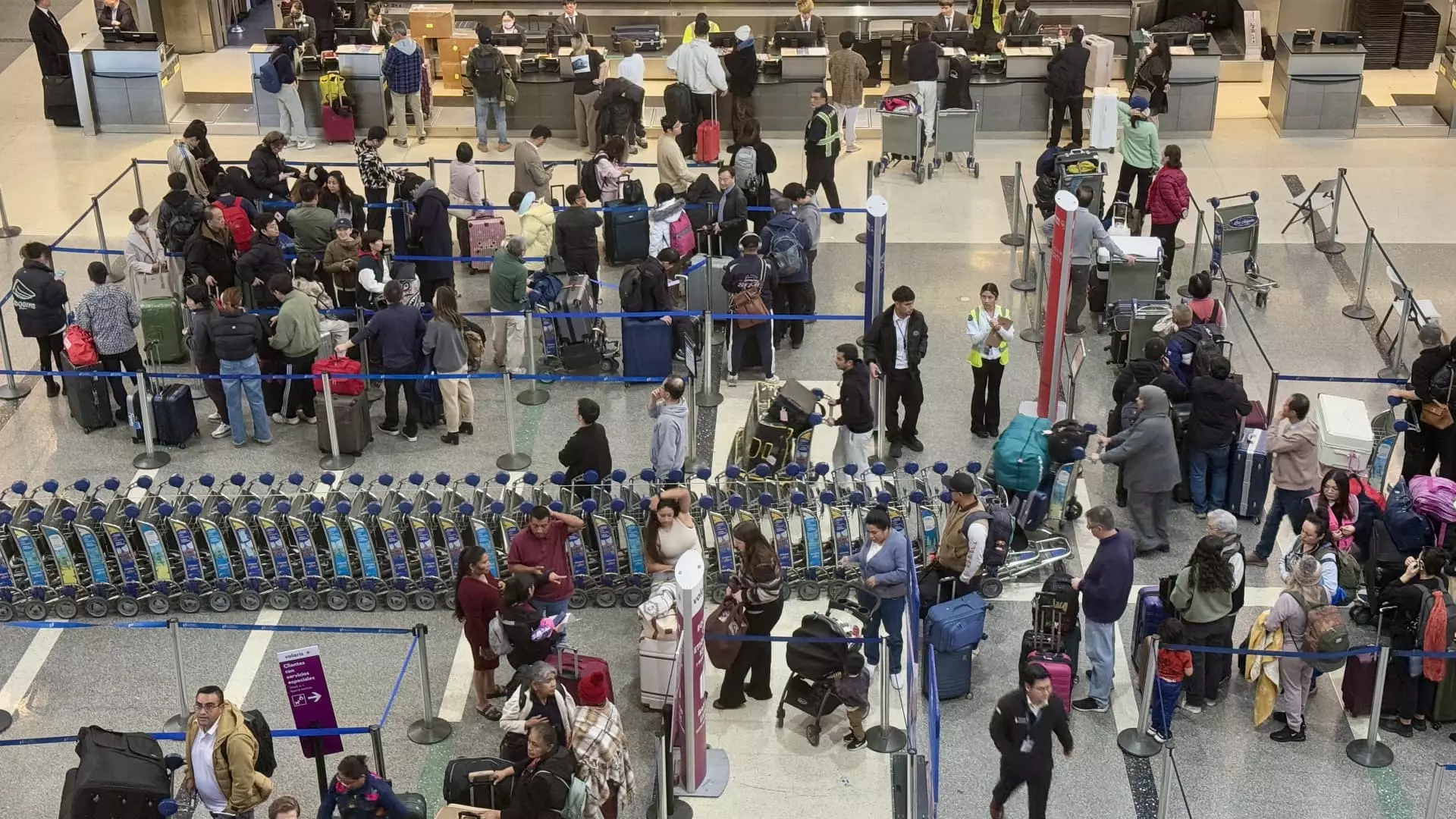In the complex web of the U.S. economy, the recent drop in costs for various goods might seem like a silver lining against the ominous clouds of inflation. However, beneath this facade of consumer relief lies a tangle of precarious factors and shifting economic tides that raises more questions than answers. As the figures on recent price declines in airfare, produce, and gasoline circulate, it’s critical to dissect these trends and understand their transient nature. After all, are these price drops genuine economic improvements, or simply a mirage that can vanish in an instant?
The Illusion of Deflation: What You Need to Know
Deflation—a word that brings a glimmer of hope to consumers—comes with its own set of complications. While prices for airline tickets and groceries show encouraging signs of decline, it’s essential to understand that these prices are affected by an array of “idiosyncratic factors.” Economists like Ryan Sweet remind us that the fundamentals of supply and demand are still in play, meaning that even a brief dip can lead to chaotic consequences. The most alarming truth is that price fluctuations in volatile categories could reverse abruptly, leaving consumers grappling with sudden increases.
Mark Zandi, Chief Economist at Moody’s, warns us that these lower prices won’t last long. As a consumer, this should raise red flags. If we are merely experiencing a temporary reprieve rather than sustained price drops, how can policymakers expect consumers to feel financially stable? The short-lived nature of these price reductions could mean that consumers are riding a wave of false optimism. Why should we celebrate falling prices that have a high probability of bouncing back—especially when tariffs threaten to drive them upward in the future?
Gas Prices: More Than Meets the Eye
Take gasoline prices, for example. Politicians often tout lower gas rates as a success story, but the reality is far murkier. Although the price at the pump has fallen from previous peaks, the average retail price is still above $3 per gallon—a far cry from claims of $1.98. The public’s perception of gas prices often glances over the significant role of crude oil markets and global demand. According to Sweet, the drop in oil prices signals fears of a slowing economy. A weaker economy means less demand for oil and, consequently, lower gas prices—but it could also indicate a broader economic malaise.
What’s troubling is that these lower prices may encourage more consumption, thereby masking underlying economic issues. Zandi’s assertion that oil producers will eventually pull back on production if prices go much lower means that consumers may soon find themselves at the mercy of rising gas rates, further exacerbated by international market dynamics.
Consumer Electronics: The Never-Ending Price War
When it comes to consumer electronics, declines in prices are expected due to technological advancements and improved production efficiencies. However, the situation becomes thornier when we consider long-term market health. Electronics prices have plummeted over the past year—televisions and smartphones saw declines of 9% and 14%, respectively. While this is music to consumers’ ears, we must ask: Are these reductions sustainable?
The underlying machinery that fuels these trends often leads to job losses in manufacturing sectors, resulting in a less robust economy. Technology may improve, but where are those improvements leading us? A few large corporations dominate electronics manufacturing, and their ability to manipulate prices leaves smaller competitors struggling. This creates a landscape of economic disparity, where some consumers benefit greatly while others bear the brunt of corporate policy.
Food Prices: Short-Lived Relief Amid Uncertain Weather
The decreases in produce prices might provide momentary stress relief for household budgets, as tomatoes and lettuce experienced sharp declines in the past year. Yet, the reasons behind these drops are anything but certain. Seasonal yield variations and transportation costs provide only a temporary cushion against looming tariffs and import restrictions. Once tariffs on Mexican tomatoes kick in, consumers can expect to feel the weight of already stretched budgets once again.
This paradoxical situation highlights the precariousness of relying on any price drop as a sign of long-term benefits. Outsourcing has left us vulnerable to international dynamics, which can shift at a moment’s notice. One unexpected weather phenomenon or political upheaval could lead to spikes in prices that negate any relief consumers have felt thus far.
The apparent falling prices in various sectors are not straightforward victories for American consumers; they embody a complex interplay of fleeting trends and deeper systemic issues that remain unresolved. As we celebrate these drops, we must remain cautious and realistic about the economic landscape’s underlying vulnerabilities. The question that looms large is: will these comfort zones become the next financial pitfall?

